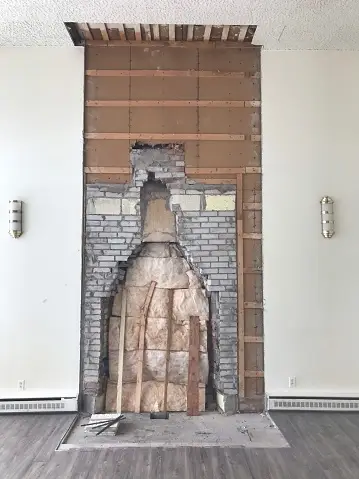Introduction
The warmth and ambiance of a fireplace can create a cozy and inviting atmosphere in your home. However, to enjoy the benefits of a fireplace or wood-burning stove safely and efficiently, proper chimney installation is essential. A well-designed and correctly installed chimney not only ensures the effective removal of smoke and harmful gases but also minimizes the risk of fire hazards.
In this comprehensive guide, we will take you through the step-by-step process of chimney installation, highlighting key considerations to ensure safety and efficiency in your home.
- Pre-Installation Preparation
Before embarking on chimney installation, it is crucial to assess your specific needs and requirements. Consider the location within your home where the chimney will be installed, taking into account factors such as aesthetics and functionality.
Additionally, it is essential to obtain any necessary permits and approvals from local authorities to ensure compliance with building regulations.
- Selecting the Right Chimney Materials
The choice of chimney materials plays a significant role in the durability, insulation, and overall appearance of your chimney. Common options include brick, stone, and metal.
Each material has its advantages and disadvantages, so it is essential to evaluate factors such as cost, aesthetics, maintenance requirements, and insulation properties. Consulting with professionals can help you make an informed decision based on your specific needs and budget.
- Hiring Professional Chimney Installers
While some homeowners may be inclined to undertake chimney installation as a DIY project, it is highly recommended to hire experienced professionals for this task. Proper chimney installation requires specialized knowledge and skills to ensure the structural integrity, safety, and efficiency of the chimney system.
Research and select a reputable chimney installation company with a track record of successful installations. Check for licenses, certifications, and insurance to ensure you are working with qualified professionals.
- Planning and Designing the Chimney
Collaboration with the chimney installation professionals is essential during the planning and design phase. Together, you will create a detailed plan that considers factors such as chimney height, width, and design.
Proper airflow is crucial for efficient chimney operation, so professionals will also assess the fuel type and ventilation requirements to ensure compliance with local regulations and safety standards.
- Foundation and Base Construction
To ensure stability and longevity, the chimney requires a solid foundation. Proper preparation of the foundation involves clearing the area, excavating the necessary space, and constructing a sturdy base that can support the weight of the chimney structure.
The professionals will carefully align and level the base to ensure a stable and secure foundation for the chimney.
- Constructing the Chimney Structure
The construction of the chimney structure depends on the selected materials. For brick chimneys, skilled masons will lay bricks using appropriate mortar, following established construction techniques and guidelines.
Metal chimneys, on the other hand, involve assembling pre-fabricated components. In either case, attention to detail is crucial to ensure a structurally sound chimney that withstands the test of time.
- Installing Flue Liners and Dampers
Flue liners play a vital role in the safety and efficiency of the chimney system. They protect the chimney walls from the corrosive effects of combustion byproducts and facilitate the smooth passage of smoke and gases.
The professionals will select the appropriate type and size of flue liners based on the fuel type and chimney design. Proper installation and sealing of flue liners are essential to prevent leaks and ensure optimal performance.
Additionally, dampers are installed to regulate airflow and enhance energy efficiency by preventing heat loss when the fireplace is not in use.
- Connecting to the Heating Appliance
Proper connection of the chimney to the heating appliance is crucial for safety and efficiency. Whether it is a fireplace, wood stove, or other heating appliance, following the manufacturer’s guidelines is essential.
The professionals will ensure the correct sizing, positioning, and sealing of the connection to prevent leaks, drafts, and potential fire hazards.
- Adding Chimney Caps and Spark Arrestors
Chimney caps are essential components that provide protection against debris, animals, and weather elements. They prevent moisture from entering the chimney, which can cause damage over time.
Additionally, incorporating spark arrestors is vital for fire safety, as they prevent sparks or embers from escaping the chimney and potentially igniting nearby combustible materials. Regular maintenance and cleaning of chimney caps and spark arrestors are necessary to ensure their optimal performance.
- Chimney Inspection and Safety Testing
Once the chimney installation is complete, a thorough inspection is conducted to ensure compliance with safety standards and proper functionality. The professionals will inspect the chimney for any structural issues, leaks, or ventilation problems.
Additionally, safety tests are performed to assess airflow, draft, and the overall performance of the chimney system. Any issues or concerns identified during the inspection are addressed promptly to ensure a safe and efficient chimney operation.
- Regular Maintenance and Cleaning
To maintain the safety and efficiency of your chimney, regular maintenance and cleaning are essential. Schedule annual chimney inspections and cleanings to remove creosote buildup, which can lead to chimney fires.
Additionally, consider implementing DIY chimney maintenance practices such as visual inspections, checking for obstructions, and ensuring proper airflow. Professional chimney cleaning services can provide a comprehensive cleaning to remove stubborn creosote and ensure optimal chimney performance.
Conclusion
Proper chimney installation is vital for the safety, efficiency, and longevity of your chimney system. By following the step-by-step guide outlined above, you can ensure a successful installation that meets safety standards and provides reliable performance.
Remember, hiring experienced professionals is key to achieving a well-designed and properly installed chimney. With a well-functioning chimney, you can enjoy the warmth and comfort of your fireplace or wood-burning stove while maintaining a safe and efficient home environment.


